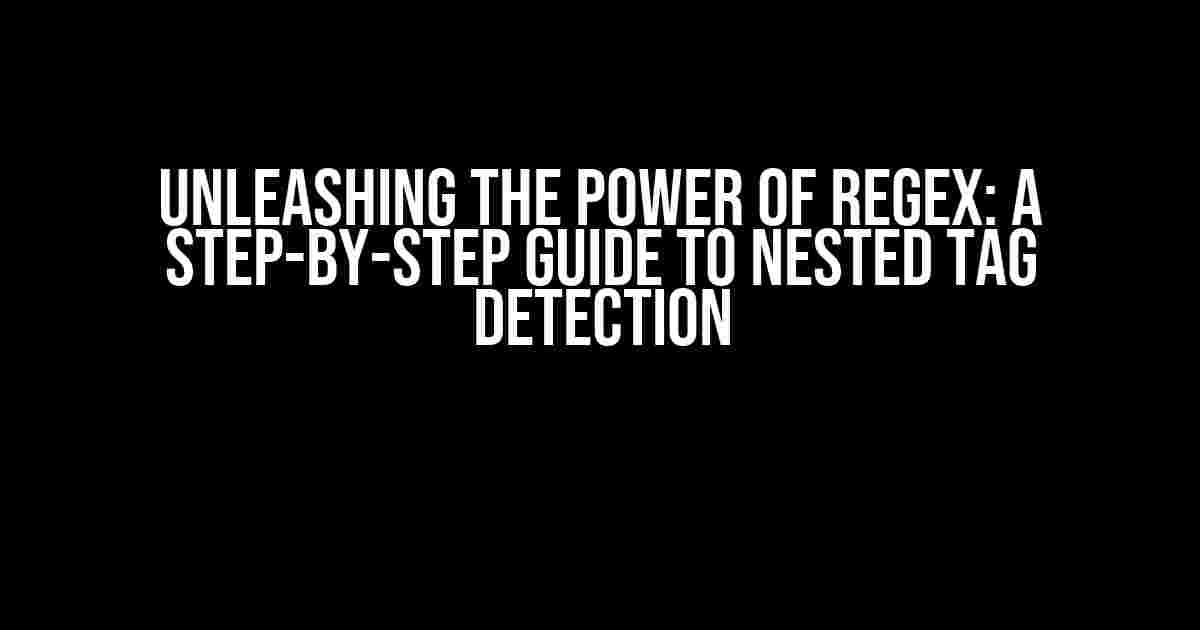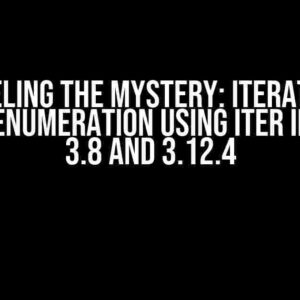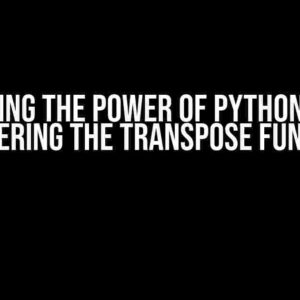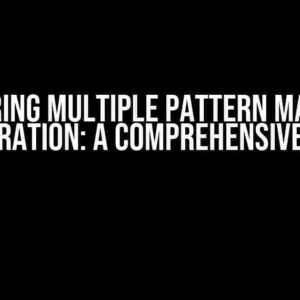Regular Expressions (Regex) – the unsung heroes of the coding world. While they may seem daunting at first, with the right guidance, Regex can become your most trusted ally in tackling even the most complex text parsing tasks. In this article, we’ll delve into the world of Regex and explore how to harness its power for nested tag detection. Buckle up, folks, and get ready to unleash your inner Regex ninja!
What is Regex, and Why Do I Need It?
Regex, in a nutshell, is a pattern-matching language that allows you to search, validate, and extract data from strings. It’s like having a super-powered search function that can sniff out specific patterns in your text data. In the context of nested tag detection, Regex becomes an indispensable tool for identifying and extracting tags within tags.
Regex Basics: A Quick Refresher
Before we dive into the world of nested tag detection, let’s cover some Regex basics to ensure everyone’s on the same page:
^matches the start of a string$matches the end of a string?makes the preceding element optional*matches 0 or more occurrences of the preceding element+matches 1 or more occurrences of the preceding element{n}matches exactlynoccurrences of the preceding element{n,}matches at leastnoccurrences of the preceding element( }groups elements and captures them for later use|specifies an alternative (OR) condition
The Art of Nested Tag Detection
Nested tag detection involves identifying tags within tags. For example, in HTML, you might have a <p> tag within a <div> tag, which is itself within a <body> tag. Regex provides a powerful way to detect and extract these nested tags.
Capturing Groups: The Key to Nested Tag Detection
Capturing groups, denoted by parentheses ( ), allow you to group elements and capture them for later use. In the context of nested tag detection, capturing groups enable us to extract the inner tags while preserving the outer tags.
<div>(.*?)</div>
In this example, the capturing group `(.*?)` matches any characters (except newline characters) between the <div> and </div> tags. The `?` makes the match lazy, ensuring that the group captures the minimum number of characters necessary.
Recursive Patterns: The Secret to Detecting Nested Tags
Recursive patterns involve repeating a pattern within itself. In the context of nested tag detection, recursive patterns enable us to match tags within tags.
<(div|p|span)>(.*?)</\1>
In this example, the pattern matches any <div>, <p>, or <span> tag, followed by any characters (captured in group 2), and finally the corresponding closing tag. The `\1` backreference refers to the first capturing group, ensuring that the closing tag matches the opening tag.
Real-World Examples: Putting it All Together
Let’s put our Regex skills to the test with some real-world examples:
Example 1: Extracting Nested HTML Tags
Given the following HTML string:
<html>
<body>
<div>
<p>Hello, World!</p>
<span><strong>Bold Text</strong></span>
</div>
</body>
</html>
We can use the following Regex pattern to extract the nested tags:
<(div|p|span)>(.*?)</\1>
This pattern will match the <div>, <p>, and <span> tags, capturing the inner HTML in group 2.
Example 2: Detecting Nested XML Tags
Given the following XML string:
<root>
<element>
<subelement>Value 1</subelement>
<subelement>Value 2</subelement>
</element>
</root>
We can use the following Regex pattern to detect the nested tags:
<(element|subelement)>(.*?)</\1>
This pattern will match the <element> and <subelement> tags, capturing the inner XML in group 2.
Best Practices for Nested Tag Detection with Regex
When working with Regex for nested tag detection, keep the following best practices in mind:
- Use lazy matching (e.g., `.*?`) to ensure minimal matching
- Use capturing groups to extract the inner tags
- Employ recursive patterns to match tags within tags
- Test your Regex patterns with a variety of input strings
- Use a Regex debugger or tester to visualize the matching process
- Keep your Regex patterns simple and readable
Conclusion: Unleashing the Power of Regex for Nested Tag Detection
In this article, we’ve explored the world of Regex and its application to nested tag detection. With the right techniques and best practices, Regex can become a powerful tool in your text parsing arsenal. Remember to keep your patterns simple, use capturing groups, and test your Regex with a variety of input strings. Happy Regex-ing!
| Regex Pattern | Description |
|---|---|
<(div|p|span)>(.*?)</\1> |
Matches HTML tags (div, p, or span) with inner HTML captured in group 2 |
<(element|subelement)>(.*?)</\1> |
Matches XML tags (element or subelement) with inner XML captured in group 2 |
Bookmark this Regex cheat sheet for quick reference and happy coding!
Frequently Asked Questions
Get the inside scoop on regex for nested tag detection with these frequently asked questions!
How do I detect a nested HTML tag using regex?
You can use a regex pattern like `<([a-zA-Z]+)[^>]*>[^<]*<\\/\\1>` to detect a nested HTML tag. This pattern matches an opening tag, followed by any characters except `<`, then a closing tag with the same name as the opening tag. Note that this pattern won't work for all cases, especially with nested tags of different types.
Can I use regex to extract nested tags with different nesting levels?
Yes, you can! A regex pattern like `<([a-zA-Z]+)[^>]*>(?:[^<]|<(?:[^>]+|(?R))*>)*<\\/\\1>` can extract nested tags with different nesting levels. This pattern uses a recursive subpattern `(?:[^<]|<(?:[^>]+|(?R))*>)*` to match any number of nested tags. However, keep in mind that this pattern can be slow and may cause performance issues for large inputs.
How do I handle self-closing tags in regex?
Self-closing tags like `
` can be handled by adding an optional `/?` at the end of the opening tag pattern, like so: `<([a-zA-Z]+)[^>]*meer?/>?`. This allows the regex to match both regular and self-closing tags.
Can regex handle malformed HTML tags?
Regex can match malformed HTML tags, but it may not always produce the desired results. Malformed tags can cause the regex pattern to fail or match unwanted text. To handle malformed tags, you may need to use a dedicated HTML parsing library instead of regex.
Are there any regex flavors that support recursive patterns for nested tags?
Yes, some regex flavors like PCRE (Perl Compatible Regular Expressions) and .NET support recursive patterns for nested tags. These flavors allow you to use recursive subpatterns to match nested tags of arbitrary depth. However, not all regex flavors support recursive patterns, so be sure to check the documentation for your specific flavor.







